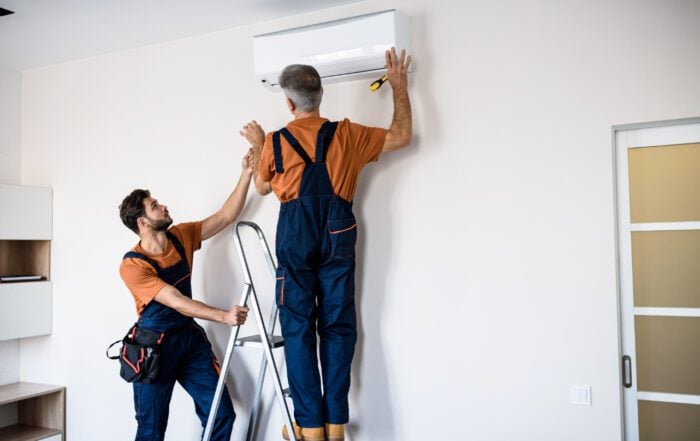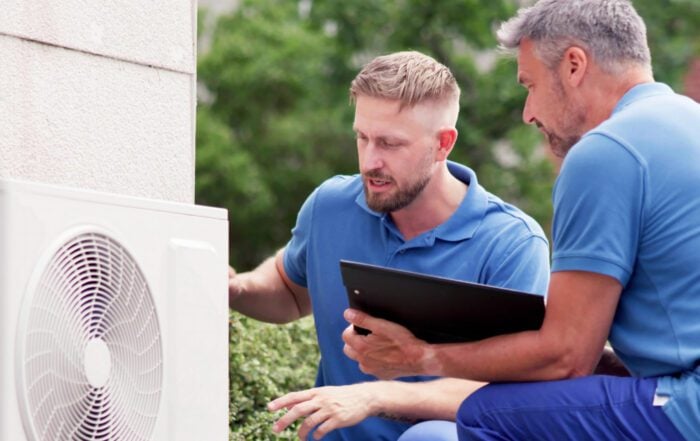The light from the sun that hits the Earth’s surface in just one minute can meet all energy demands for an entire year.
Imagine being able to harness just a piece of that to power your own home. That’s what solar power systems do.
A solar power system captures energy from the sun, converts it to electricity you can use, and supplies your home appliances and systems rather than using power from your utility company.
How It Works
The solar panels collect particles found in sunlight called photons when they hit the surface, creating a direct current (DC). An inverter takes the DC and converts it into an alternating current (AC), routing it to the home’s switchboard to supply power for appliances, lights, etc. If there is a surplus of converted electricity, it is stored for use later on when direct sunlight isn’t available.
Solar Power Myths
“They’re too expensive, and the ROI will take too long.”
Solar panels are much more affordable now than they ever were before. They also help save a substantial amount on energy bills monthly, which helps to offset the initial purchase.
With the available tax credits and energy saving possibilities, a solar power system can start to show a return on investment in just a couple of years.
Because solar panels last 25-30 years, there’s no need to replace them continually. Once you have them in place, you’re set for a long time.
“I should wait for the efficiency to increase.”
Yes, companies are continually trying to make improvements to solar energy options, but the advancements are minimal in increments – we’ve essentially been using the same solar technology for decades with minor enhancement; so you would be waiting a long time for substantial improvements.
“With the low change in electricity prices, it’s just not worth it.”
Unfortunately, changes in electricity cost influxes quite steadily, whereas solar power decreases consistently.
“Solar panels don’t work well in my climate.”
You don’t have to have to be a notably sunny climate to take advantage of solar power – just take a look at Germany, one of the world leaders in green-energy solutions.
Solar panels actually work best in cold, sunny conditions. The colder air allows electricity to flow more efficiently, which means they can store up more energy. The warmer it gets outside, the less efficient the panels become, saving less power from the same amount of light.
While it’s true that they don’t work as well in snowy, cloudy climates, they still gather an effective amount of electricity. To prevent snow pile-up, they can be installed at an angle, letting the snow slide off.
If there is any sun – even minimal – during daylight hours, solar panels can be useful. This makes Cleveland an excellent climate for solar panels.
“If I decide to move, I lose out on my investment.”
A solar power system can actually pay for itself in as little as six years. And when you do eventually want to sell, it can help increase your home’s value. So even if you plan to move in ten to fifteen years, it’s more than worth the investment.
“Solar panels look unappealing, and they’ll probably damage my roof.”
The aesthetic appeal is entirely subjective to the owner, but you can install them in places where they’ll be less noticeable.
As far as roof damage goes, if a professional like Stack completes the installation, you have no reason to worry. When panels are set into place, they leave enough gapping between the panel and the roof to allow for airflow.
“There’s too much maintenance.”
There’s actually minimal maintenance for panels. You’ll want to complete an annual system inspection, but they’re built to endure the elements, so you don’t have constant repairs and inspections.
“Only a few states offer incentives, so mine probably doesn’t.”
Just about every U.S. state offers some sort kind of incentive program, from tax credits to loans to grants. And the federal government has a 30% tax credit available for certain systems installed before the end of 2019.
Other Solar Energy Benefits
-
Protects the Earth’s water supply
Unlike fossil fuels, collecting solar energy doesn’t require the use of water, so there’s no pollution of water supplies.
This also means it doesn’t use water during a drought. Other sources of energy use water for cooling, which is a waste of the limited supply.
-
Both short term and long term savings
After the initial investment, utility bills are lowered and sometimes eliminated each month. This can leads to a savings of $1000 or more every year. When you apply this savings to the cost of the system, it takes less than its lifetime to offset the investment, so you can continue to save on energy consumption for years after.
As the cost of other energy sits unstable, solar power costs are consistently dropping. Fossil fuel fluctuates based on supply, but solar energy has an endless supply. Even the cost of solar panels continues to fall, helping you save multiple ways. This also gives you secure energy independence.
Is It Right for You?
Do you own your own home?
For obvious reasons, homeowners benefit best from solar systems. In fact, most rental property owners will not approve the installation of solar energy systems in rented apartments and homes.
Is your roof in good condition?
While some units can be mounted in other locations, the most common is the roof. You can still complete roof repairs and replacements after the solar system has been installed, but it’s more difficult and will add to your cost of installation. (Added note: asphalt-shingle roofs are also the best for solar panel installation – other roof types aren’t impossible to work with, but they prove to be more difficult, also adding to the cost.) If your roof is outdated or if you know you’ll need to replace it in the next few years, it’s best to do it at the same time.
Do you have significant energy bills?
Households with higher energy consumption will always benefit from solar power systems more than others.
How an Installation Happens
Evaluation
The first step is to have an evaluation done on your home to make sure a system will be viable. A professional will check roof directionality, roof stability, and how much sunlight you’re likely to capture and convert.
Afterwards, you will meet with the installation company (such as Stack) to discuss your system options, taking into account your budget, your roof size, and how much power you want to save (at least 3.5-5kWh is suggested).
Inverter
The inverter – the part that transfers the energy the panels collect and sends it to the grid – is installed first, usually on an outer wall. You will need to turn your home’s power off during this installation.
You’ll need to keep in mind that the inverter will not last as long as the panels – usually ten years or so. This will most likely need to be replaced a few times during the lifespan of your system.
Panels
After the inverter comes the panels – first the frames, then the panels themselves. The installation should take no longer than 1-2 days, depending on the size of your system; once your system grows past 6kWh, it will most likely spill into the second day.
Once the panels are in place, that’s it. Your installation is complete. After, the only maintenance required for the system are yearly inspections and cleanings.
Saving the Environment, One Step at a Time
Here in the US, we have the second greatest carbon footprint of any other country. So while you are probably more interested in the financial benefits of solar power, we’d be remiss not to mention the environmental benefits as well.
A system paired with your home can offset 100,000 lbs. of carbon dioxide in 20 years, which is about the same as driving a car for 100,00 miles. And electricity generated through solar power creates absolutely no greenhouse gasses – something that can’t be said for traditional power sources.
If the idea of saving money while creating a better environment appeals to you, call Stack for a consultation.
Have Any Questions?
If this is an emergency please call 440-937-9134.
Otherwise, please feel free to call us or submit this form to schedule an appointment for service or request an estimate. We will contact you shortly!



